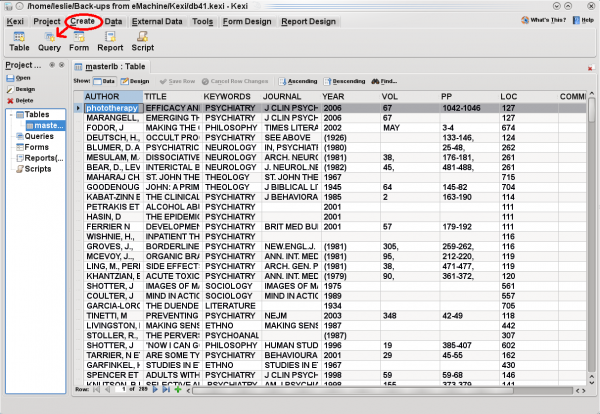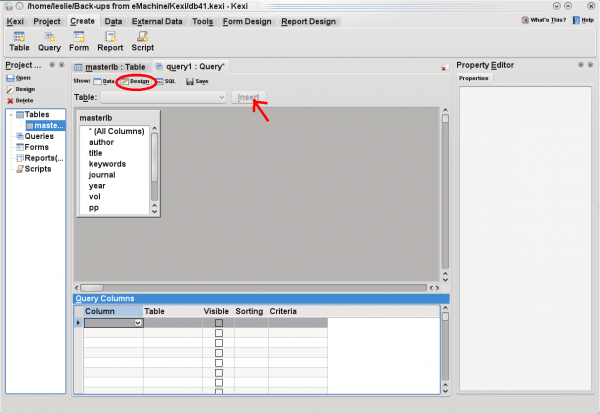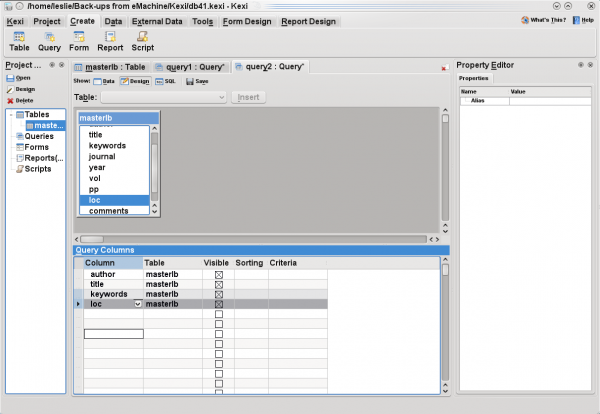Kexi/Tutorials/Reports/Kexi Reports for Beginners
← Back to Report Tutorials
← Back to Tutorials
This is a basic beginner's guide to making a report using Kexi 2.2 or newer.
Note: You may click on the screen shots below to see more detail, and click the "back" button to return to this display.
We begin with a table named "masterlb" shown in data format. In this example, the fields are named "author", "title", "keywords", and so on. Before making a report, we create a query.
Select "Query" command from the "Create" tab of the main toolbar.
In query design view, click on "Insert". A list of field names will drop down. Double-click on each field you want in your query.
The query columns will automatically fill with your field selections and with the table name, as shown next.
Let's suppose that, for your report, you want all the records matching "Neurology" in the field "keywords". Type in "Neurology" under Criteria on the "keywords" line, enclosed with single quotes.
Now, select "Save" and save your query (step not shown here). In the screen shot below, we will see the new query (named "neurology" in the save process) under Queries in the far left panel. Next, select "Report" command from the "Create" tab of the main toolbar.
Click on the tab to the right of "Properties". You will then be able to select an internal source for your report. The new query will be among the choices. Select it, and press the "Set Data" button.
At this point, before entering your data, you may wish to "Edit Sections" to create a header and other format options:
You may wish to put a label in your header. To do so, click on "Label" and then click in the Report Header area.
Notice that in the Property Editor you can enter your own Caption to replace the word "Label", and you have many options for formatting the size, position, font, etc.
To enter fields into the body of your report, click on "Field" and then click in the "Detail" section. In the Property Editor, selecting Data Source will cause a list of the fields in your query to drop down. For each field you create in the "Detail" section, select a field from the Data Source list. This binds the fields on your report to your data.
Again, there are many formatting options. Save your report. Before you switch to data mode, if you have set the data for the first time, you may have to close and re-open the report.
When you switch to data mode, you have several options, including "print".
Your printed report should look great!
Author undisclosed. Text adopted by jstaniek.



